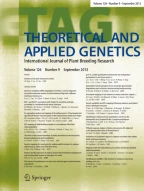Abstract
Sugarcane, commonly referred to as Saccharum officinarum, is currently divided into six species, two of them are wild and four exist only in cultivation. The two wild species and three of the cultivated ones are interfertile and have produced the interspecific hybrids that constitute the sugarcane of commerce. All species are represented by wide ranges of intergrades preserved as clones through vegetative propagation. Species are separated by variable floral characters, sugar content, chromosome numbers and epidermal hair groups. Floral characteristics are sometimes useful with clones that flower, sugar is present in widely overlapping ranges and is highly influenced by environment, chromosome numbers range from 36 to 170 in the genus and range widely within species, and some epidermal hair groups are more quantitative than qualitative. Molecular techniques show that Saccharum spontaneum is distinctly different from the other species in cytoplasmic DNA, and cluster analyses of nuclear DNA support the difference. Not only are the species interfertile but chromosomal pairing and recombination have been demonstrated, as has the possibility that some Saccharum species are hybrids of others. Taken together, these observations suggest that there is little basis for the present separation and that the six species should more properly consist of two: one being S. spontaneum, based on molecular data, and the other S. officinarum including the other four species and all interspecific hybrids.
Similar content being viewed by others
Author information
Authors and Affiliations
Additional information
Received: 20 December 1997 / Accepted: 5 June 1998
Rights and permissions
About this article
Cite this article
Irvine, J. Saccharum species as horticultural classes. Theor Appl Genet 98, 186–194 (1999). https://doi.org/10.1007/s001220051057
Issue Date:
DOI: https://doi.org/10.1007/s001220051057
